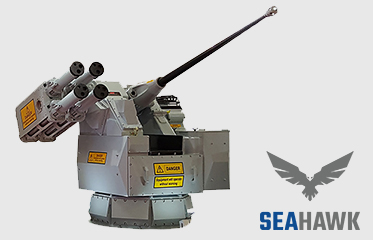MJP
Army.ca Fixture
- Reaction score
- 3,243
- Points
- 1,260
We tried to replicate T&R and MIMs along with every other standalone material management practice into SAP/DRMIS rather than building things properly. We also implemented it piece meal with fin, MASIS and then big bang DRMIS (along with many other small modules along the way). Now we are slowly doing the same with S4 Hana as MISL and a few smaller modules use it as a baselineDRMIS is probably a good example, where it has now become a giant, user unfriendly tail wagging the dog and we continue to break our routine business to try and shoehorn in SAP workflows designed for totally different customers that do very different things.
In essence we tried to canadianize an ERP and in true fashion failed.
Agreed, on the interface, it is not intuitive nor have we in 10+ years since the larger roll-out taught our people how things work. Half my day is walking people through simple navigation or where to find info.MASIS was only a small part of SAP, but from what I remember that was more of a pilot of the production management modules at the FMFs while the great big project was underway.
There are easier tools the shipyards use for production planning and management, but they also set up things like BoMs (bills of materials) on the equivalent to preventative maintenance, which we haven't done in DRMIS and no plans to do. I don't think anyone on the engineering side would have picked DRMIS after trying the SAP interface for about 10 minutes compared to other tools, as it's counter intuitive and not user friendly with an absolutely enormous learning curve. It's like using a scanning electron microscope; really powerful, but can be difficult to get it to do what you want without a lot of practice and constant use.
We end up with all the ass pain and miss a lot of the benefits. It's like using the min/max supply function, which is a lot of work to maintain, but disconnecting the background resupply function so it's all manual anyway (and we normally now order about 3 years worth of the 'annual' usage because of the HR limitations delaying the next buy).
And to make things fun, ships have independent deployed servers that don't show up in normal searches (except when portions sometimes do), so for material management there is another layer for the RCN.
I hate DRMIS, and all the processes that we know have in DRMIS that are so cumbersome we still manage things on spreadsheets and emails in addition to DRMIS, with things like project schedule milestones having zero connection to the actual work notifications and those schedules. Huge amount of garbage data.
The system is clogged with old demands, pending transactions and stuff not done because we implemented DRMIS. I am a believer in one ERP to rule them all but we truly bunged it up and the DSC lives and continues because people care and get stuff done despite the system not because of it.
I will quibble or at least say that min/maxs within the supply system work just fine, I set them or have had them set thousands of times over the years and they work. If you are referring to getting resupplied from industry then yes the buck stops at ADMMat. Once third line has a STO it can't fulfill it sends a Purchase Request to the Supply Manager who then has to work with the TA and PA to get more into the system. As you are more than aware of it just adds to their workload. Ironically TAPV has the best model for resupply as demands are sent direct to Textron when there is no stock at 3rd line. That said it is TAPV and no one cares nor do we even get parts despite that connection
I walked a buddy through the top 25 parts ordered for one of their veh fleets today and showed him that they issue pretty much 12 of a certain thing for evey work order. They also always need to order 12 every time from the depot once a work order is released because they never have stock on hand. They usually go through 24-36 a month so if he had max of 48 and min of 24 he would almost always have stock on hand rather than ordering it for each bespoke work order. Many parts were like that. Times that across all the vehicle fleets and it is just a massive time sink for everyone. No one has really given any good direction on min/maxes so most things are local initiatives; DSCO is starting some very limited work on quantifying min/max levels but we are far from having anything decent in terms of policy/national direction
Our bigger problem that stays along the same lines is we screwed up MRP by forcing SAP/DRMIS to create a STO at every level which in turns doesn't allow it to aggregate demands at every level. So instead of an order of 20 filters for a base from a BLOG/Depot that will be broken into 3-4 orders for a units on that base, we have 20 individual orders to the base and then 20 separate orders to a 1st line order. repeat rinse.
Last edited:




